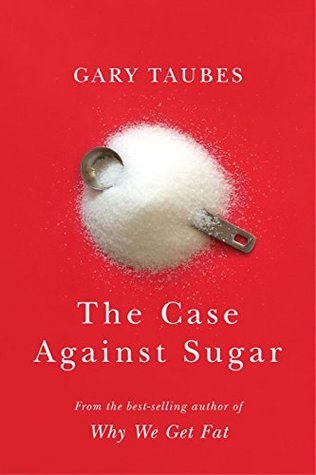One week remains on the yearly No-Sugar January, but I read the perfect book to help me continue the trend into February (my all-time record is until March). Reading this book, in fact, had me drinking Oolong tea for two days, so that I could forego the usual teaspoon I put in a cup of English Breakfast or Earl Grey.

They say when you find a hammer, the whole world is a nail, and that is indeed the case with Taubes. In the book, sugar gets blamed for the whole suite of Western diseases: diabetes (and insulin resistance), obesity, high triglycerides, metabolic syndrome, inflammation--even gout and possibly certain dementias! Indeed, something has to be blamed for the rise in these illnesses all around the world, tracking perfectly with the Westernization of diet around that same world. As became more apparent as time passed, the culprit wasn't saturated fat, as we were told for decades, so the witch hunt was back on.
Going through the research, as Taubes does at length, there are some major strikes against sugar:
- Processing fructose in the body requires the production of insulin. (Table sugar is made up of half fructose and half glucose, which abets the digestion of fructose.) Consuming a lot of sugar leads to chronically elevated insulin levels.
- Calories that get stored as fat only get released from fat cells and burned as energy when insulin levels in the body drop. So, if your insulin is always elevated, the fat never gets released, and you get fatter and fatter.
- Chronically elevated insulin levels lead to insulin resistance, which is tied to everything from high blood pressure to elevated triglycerides to inflammation to creating and feeding hungry cancer cells.
The problem with most studies done on humans is that there is neither the money, time, nor inclination to do long-term research, and sugar takes a while to wreak havoc. One study thought sugar was just fine, but that was when consumed at the then-current rate of forty-two pounds per person per year. We blew past that number decades ago and now sit at about ninety pounds! Even if we don't drink soda or eat many desserts, sugar is omnipresent in processed foods, from bread to salad dressing to cereal to most peanut butters. (After reading this book, I'm switching brands of whole-wheat bread. Too much sugar in the one we have in the house.)
Another fascinating path Taubes goes down is to recount the tobacco industry's history with sugar. I had no idea "American blend" cigarette tobaccos mixed a roasted, caramelized tobacco variety with another variety that had actually been marinated in sugar solution! The sweetness both increased the inhalability of the tobacco and the nicotine delivered. Amazing. Toxic, addictive, and amazing. Sugar helped tobacco lure new smokers, and it made the smoke more deadly.
As I head to the dentist for more fillings this morning, it's hard to argue that sugar needs to be eaten. Yes, it tastes wonderful, preserves food, and does seem to provide a brief, accessible energy boost, but, as Sugar-Free January proves every year, it can be eaten in miniscule amounts and not be missed, for the most part.
![Laura and Mary during annual "sugaring off" time in Wisconsin [Garth Williams]](http://static1.squarespace.com/static/5898e1d3579fb3f7fe154f8a/58a3aca0403c66252dcdfeef/58a3acb3403c66252dce025d/1487121587977/Maple.jpg?format=original) So consider extending your reduced-sugar period this year and saving the sugar blowouts for special occasions. Your triglycerides will thank you for it.
So consider extending your reduced-sugar period this year and saving the sugar blowouts for special occasions. Your triglycerides will thank you for it.




